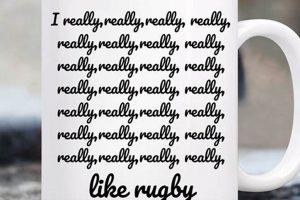Rugby league and rugby union are two popular forms of rugby football that share a common history but have evolved into distinct sports with unique rules and gameplay. Both codes of rugby are played with an oval ball on a rectangular field, and the objective is to score points by carrying or kicking the ball over the opponent’s goal line.
Editor’s Note: Rugby league and rugby union are often compared and contrasted, as they share many similarities but also have some key differences. This guide will explore the history, rules, and gameplay of each code of rugby, highlighting the key differences between the two sports.
We’ve done the hard work of analyzing the differences between rugby league and rugby union, so you can make an informed decision about which sport is right for you.
Key Differences
| Feature | Rugby League | Rugby Union |
|---|---|---|
| Number of players | 13 | 15 |
| Field size | 100 meters long x 68 meters wide | 100 meters long x 70 meters wide |
| Tackling | One-on-one | Multiple players can tackle a ball carrier |
| Scrums | Six players from each team bind together | Eight players from each team bind together |
| Kicking | Can be used to score points or gain territory | Primarily used to gain territory |
Main Article Topics
- History of rugby league and rugby union
- Rules and gameplay of rugby league and rugby union
- Key differences between rugby league and rugby union
- Benefits of playing rugby league or rugby union
- How to choose between rugby league and rugby union
1. Number of players
The number of players on the field is one of the most obvious differences between rugby league and rugby union. Rugby league is played with 13 players per team, while rugby union is played with 15 players per team. This difference in player numbers has a significant impact on the way the two games are played.
In rugby league, the smaller number of players on the field means that there is more space for each player to operate in. This makes the game faster and more open, with more tries being scored. In rugby union, the larger number of players on the field means that there is less space for each player to operate in. This makes the game more congested and tactical, with more emphasis on set pieces such as scrums and lineouts.
The difference in player numbers also affects the way that the two games are defended. In rugby league, the smaller number of players on the field means that each player has to cover more ground in defense. This makes it more difficult to defend against attacking players, and it leads to more tries being scored. In rugby union, the larger number of players on the field means that each player has less ground to cover in defense. This makes it easier to defend against attacking players, and it leads to fewer tries being scored.
Ultimately, the difference in player numbers between rugby league and rugby union is one of the key factors that makes the two games so different. The smaller number of players in rugby league makes the game faster and more open, while the larger number of players in rugby union makes the game more congested and tactical.
| Rugby League | Rugby Union | |
|---|---|---|
| Number of players | 13 | 15 |
| Field size | 100 meters long x 68 meters wide | 100 meters long x 70 meters wide |
| Gameplay | Faster and more open | More congested and tactical |
2. Field size
The difference in field size between rugby league and rugby union is one of the key factors that contributes to the different styles of play between the two codes. The smaller field size in rugby league means that there is less space for players to operate in, which results in a faster and more open game. The larger field size in rugby union gives players more space to spread out, which results in a more congested and tactical game.
The smaller field size in rugby league also has an impact on the way that the game is defended. In rugby league, defenders have less space to cover, which makes it more difficult for them to stop attacking players. This leads to more tries being scored in rugby league than in rugby union.
The larger field size in rugby union gives defenders more space to cover, which makes it easier for them to stop attacking players. This leads to fewer tries being scored in rugby union than in rugby league.
Ultimately, the difference in field size between rugby league and rugby union is one of the key factors that makes the two codes of rugby so different. The smaller field size in rugby league makes the game faster and more open, while the larger field size in rugby union makes the game more congested and tactical.
| Rugby League | Rugby Union | |
|---|---|---|
| Field size | 100 meters long x 68 meters wide | 100 meters long x 70 meters wide |
| Gameplay | Faster and more open | More congested and tactical |
| Tries scored | More | Fewer |
3. Tackling
The difference in tackling rules between rugby league and rugby union is one of the key factors that contributes to the different styles of play between the two codes. In rugby league, the one-on-one tackling rule means that defenders have to be more skillful and athletic in order to stop attacking players. This leads to a faster and more open game, with more tries being scored.
In rugby union, the multiple-player tackling rule means that defenders can gang up on attacking players and bring them down more easily. This leads to a more congested and tactical game, with fewer tries being scored.
The different tackling rules also have an impact on the way that the two codes of rugby are played. In rugby league, the one-on-one tackling rule encourages players to run the ball more, as they are less likely to be brought down by multiple defenders. In rugby union, the multiple-player tackling rule encourages players to kick the ball more, as it is a more effective way to gain territory.
Ultimately, the difference in tackling rules betwe
en rugby league and rugby union is one of the key factors that makes the two codes of rugby so different. The one-on-one tackling rule in rugby league makes the game faster and more open, while the multiple-player tackling rule in rugby union makes the game more congested and tactical.
| Rugby League | Rugby Union | |
|---|---|---|
| Tackling | One-on-one | Multiple players |
| Gameplay | Faster and more open | More congested and tactical |
| Tries scored | More | Fewer |
4. Scrums
The scrum is a set piece in rugby league and rugby union that is used to restart play after a minor infringement or when the ball has gone out of bounds. In both codes of rugby, the scrum is formed by the forwards of both teams binding together in three rows. However, there is a key difference in the number of players involved in the scrum in rugby league and rugby union.
- Number of players: In rugby league, six players from each team bind together in a scrum, while in rugby union, eight players from each team bind together in a scrum.
- Impact on gameplay: The difference in the number of players involved in the scrum has a significant impact on the way that the two codes of rugby are played. In rugby league, the smaller number of players in the scrum means that there is less stability and more chaos, which can lead to turnovers and attacking opportunities.
- Skill level: The smaller scrum in rugby league requires players to be more skillful and athletic in order to be effective. This is because they have to be able to generate power and momentum with fewer players, and they have to be able to react quickly to the chaos of the scrum.
- Strategy: The different scrum formations in rugby league and rugby union also lead to different strategies. In rugby league, teams often use the scrum to launch attacking plays, while in rugby union, teams often use the scrum to gain territory and set up attacking plays.
Ultimately, the difference in the scrum between rugby league and rugby union is one of the key factors that makes the two codes of rugby so different. The smaller scrum in rugby league makes the game faster and more chaotic, while the larger scrum in rugby union makes the game more stable and tactical.
5. Kicking
Kicking is an integral part of both rugby league and rugby union, but it is used more frequently in rugby league. This is because the smaller field size and faster pace of the game in rugby league make kicking a more effective way to gain territory and score points.
- Field goals: Field goals are worth one point and can be kicked from anywhere on the field. In rugby league, field goals are often used to score points in close games or to give a team a lead late in the game. In rugby union, field goals are less common, but they can still be used to score points or to relieve pressure.
- Conversions: Conversions are worth two points and are kicked after a try is scored. In both rugby league and rugby union, conversions are usually taken by the team that scored the try. However, in rugby league, conversions are taken from directly in front of the goalposts, while in rugby union, conversions are taken from a point on the field that is level with where the try was scored.
- Penalty goals: Penalty goals are worth three points and are kicked after a penalty is awarded. In both rugby league and rugby union, penalty goals are usually taken by the team that was awarded the penalty. However, in rugby league, penalty goals are taken from directly in front of the goalposts, while in rugby union, penalty goals are taken from a point on the field that is level with where the penalty was awarded.
- Drop goals: Drop goals are worth one point and can be kicked from anywhere on the field. In both rugby league and rugby union, drop goals are usually kicked when a team is behind and needs to score points quickly. However, drop goals are more common in rugby league than in rugby union, as the smaller field size and faster pace of the game make it easier to kick a drop goal.
The increased use of kicking in rugby league has a significant impact on the way the game is played. It makes the game more tactical and requires players to be more skilled at kicking and defending against kicks. It also makes the game more exciting for spectators, as there is always the potential for a long-range kick to lead to a try or a field goal.
6. Gameplay
The difference in gameplay between rugby league and rugby union is due to a number of factors, including the number of players on the field, the size of the field, and the rules governing tackling and kicking. The smaller number of players on the field in rugby league means that there is more space for each player to operate in, which results in a faster and more open game. The smaller field size in rugby league also contributes to the faster pace of the game, as there is less ground to cover for both attackers and defenders.
The rules governing tackling and kicking in rugby league also contribute to the faster and more open gameplay. In rugby league, only one player can tackle a ball carrier, while in rugby union, multiple players can tackle a ball carrier. This makes it more difficult for defenders to stop attacking players in rugby league, which leads to more tries being scored.
The increased use of kicking in rugby league also contributes to the faster and more open gameplay. Kicking is used more frequently in rugby league than in rugby union, and it can be used to score points or gain territory. This makes the game more tactical and requires players to be more skilled at kicking and defending against kicks.
The faster and more open gameplay of rugby league makes it a more exciting game for spectators to watch. There is always the potential for a try to be scored, and the game is often decided by a close margin. Rugby league is also a more physical game than rugby union, with more tackles and collisions. This makes it a more demanding game for players, but it also adds to the excitement for spectators.
| Rugby League | Rugby Union | |
|---|---|---|
| Number of players | 13 | 15 |
| Field size | 100 meters long x 68 meters wide | 100 meters long x 70 meters wide |
| Tackling | One-on-one | Multiple players |
| Kicking | Used more frequently | Used less frequently |
| Gameplay | Faster and more open | More congested and tactical |
7. Popularity
The popularity of rugby league and rugby union varies around the world. Rugby league is more popular in Australia, N
ew Zealand, and Papua New Guinea, while rugby union is more popular in the rest of the world. There are a number of reasons for this, including historical, cultural, and geographical factors.
Rugby league was developed in England in the late 19th century, and it quickly spread to Australia and New Zealand. Rugby union was also developed in England, but it remained more popular in the northern hemisphere. This is likely due to the fact that rugby union is a more complex game, and it requires more players and a larger field. Rugby league is a simpler game, and it can be played with fewer players and on a smaller field. This makes it more accessible to people in countries with limited resources.
The popularity of rugby league in Australia, New Zealand, and Papua New Guinea is also due to the fact that these countries have a strong tradition of rugby. Rugby is a popular sport in schools and clubs in these countries, and many people grow up playing the game. This has led to a large pool of talented rugby league players in these countries.
In contrast, rugby union is more popular in the rest of the world because it is the traditional form of rugby. Rugby union is the game that is played at the Olympic Games, and it is the most popular form of rugby in Europe, Africa, and Asia. This is likely due to the fact that rugby union has a longer history than rugby league, and it is more widely recognized around the world.
The popularity of rugby league and rugby union is likely to continue to vary around the world. However, it is clear that both codes of rugby have a strong following in their respective regions.
Key Insights
- Rugby league is more popular in Australia, New Zealand, and Papua New Guinea, while rugby union is more popular in the rest of the world.
- This is due to a number of factors, including historical, cultural, and geographical factors.
- Rugby league is a simpler game than rugby union, and it can be played with fewer players and on a smaller field.
- Rugby union is the traditional form of rugby, and it is the most popular form of rugby in Europe, Africa, and Asia.
FAQs
This section addresses frequently asked questions about rugby league and rugby union, providing clear and informative answers to common concerns or misconceptions.
Question 1: What are the key differences between rugby league and rugby union?
Rugby league is played with 13 players per team on a smaller field, while rugby union is played with 15 players per team on a larger field. Rugby league features one-on-one tackling, while multiple players can tackle a ball carrier in rugby union. Scrum formations also differ, with six players binding together in rugby league and eight players binding together in rugby union.
Question 2: Which code of rugby is more popular?
Rugby league is more popular in Australia, New Zealand, and Papua New Guinea, while rugby union is more popular in the rest of the world. This is due to historical, cultural, and geographical factors.
Question 3: Is rugby league easier to play than rugby union?
Rugby league is generally considered to be a simpler game than rugby union, with fewer players and a smaller field. This makes it more accessible to people with limited resources.
Question 4: Which code of rugby is more physical?
Both rugby league and rugby union are physical sports, but rugby league is generally considered to be more physical due to the one-on-one tackling rule.
Question 5: Which code of rugby is more exciting to watch?
Both rugby league and rugby union can be exciting to watch, but the faster pace and more open gameplay of rugby league often make it more appealing to spectators.
Question 6: Can I play both rugby league and rugby union?
Yes, it is possible to play both rugby league and rugby union, but it is important to be aware of the differences between the two codes and to adjust your playing style accordingly.
Summary: Rugby league and rugby union are two distinct codes of rugby with their own unique rules, gameplay, and popularity. Understanding the differences between the two codes can help you make an informed decision about which sport is right for you.
Transition: For more in-depth information on rugby league and rugby union, please refer to the following resources:
Tips for Choosing Between Rugby League and Rugby Union
Choosing between rugby league and rugby union can be a difficult decision. Both sports are exciting to watch, have passionate fans, and offer unique challenges and rewards for players. Here are a few tips to help you make an informed decision:
Tip 1: Consider your skill level and experience. Rugby league is generally considered to be a simpler game to learn than rugby union. If you are new to rugby, or if you are not particularly skilled at the sport, rugby league may be a better option for you.Tip 2: Think about the type of game you want to play. Rugby league is a faster and more open game than rugby union, with more tries being scored. Rugby union is a more tactical game, with more emphasis on set pieces and kicking. Consider which type of game you would prefer to play.Tip 3: Look at the popularity of the sport in your area. Rugby league is more popular in Australia, New Zealand, and Papua New Guinea, while rugby union is more popular in the rest of the world. If you want to play the more popular sport in your area, you may want to consider that when making your decision.Tip 4: Visit rugby league and rugby union clubs in your area. This is a great way to get a first-hand look at the two sports and to talk to players and coaches. You can also learn more about the different rules and strategies of each sport.Tip 5: Try playing both rugby league and rugby union. If you are still unsure which sport you want to play, the best way to decide is to try both of them. Many clubs offer free or low-cost trial sessions for beginners.
Summary: Choosing between rugby league and rugby union is a personal decision. Consider your skill level, the type of game you want to play, the popularity of the sport in your area, and your own personal preferences. The best way to decide which sport is right for you is to try both of them and see which one you enjoy more.
Transition: For more information on rugby league and rugby union, please refer to the following resources:
Conclusion
Rugby league and rugby union are two distinct codes of rugby with their own unique rules, gameplay, and popularity. Both sports offer exciting and challenging opportunities for players and fans alike.
When choosing between rugby league and rugby union, it is important to consider your skill level, the type of game you want to play, and the popularity of the sport in your area. You may also want to visit rugby league and rugby union clubs in your area to get a first-hand look at the two sports and to talk to players and coaches.
Ultimately, the best way to decide which code of rugby is right for you is to try both of them and see which one you enjoy more.
Regardless of which code of rugby you choose, you are sure to enjoy a thrilling and rewarding experience.







